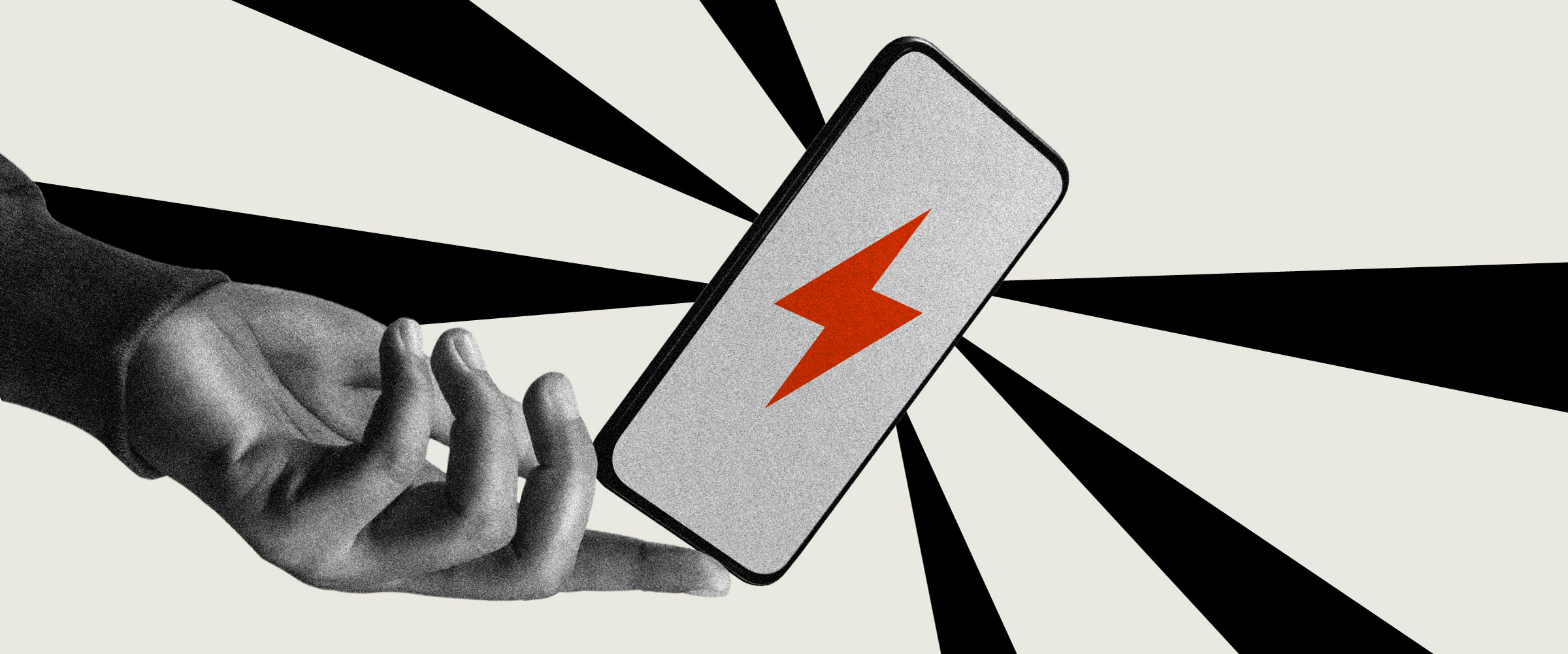
As the tech landscape continues to evolve at a breakneck pace, it’s imperative that brands keep up or risk becoming obsolete. While traditional brand consulting has an important place, truly impactful brand strategies are those that go beyond superficial design and concise messaging. Let’s explore the critical components often overlooked by run-of-the-mill branding agencies and shed light on what it really takes to position a technology brand for lasting success.
Master Your Value Proposition: What makes your company different from the rest? What problems do you solve for your customers? Arvind Krishna, CEO of IBM, sums this up with, “Brand is not about being different. It’s about being better.”
Craft a Stellar Brand Identity: This includes your logo, tagline, color scheme, and overall visual aesthetic. Your brand identity should be consistent and memorable, Steve Jobs famously said, “Design is not just what it looks like and feels like. Design is how it works.”
Amplify Your Presence: Your brand should be communicated across all your marketing channels, from your website to social media to advertising. Seth Godin likes to say, “The best brands are the ones that people talk about.”
Cultivate Authentic Relationships: Your brand is not just about what you say, it’s also about how you make your customers feel. Or, as Tim Cook rightfully stated, “Branding is about creating a promise to the customer and then delivering on that promise over and over again.”
This is all perfectly good branding advice and woefully incomplete. Simply put, the best practices listed above will jumpstart a conversation about branding, but they won’t really help form a proper brand strategy.
With so many fluffy branding agencies out there, we believe there should not be a discernible difference between branding and brand strategy. The two are inextricably linked, and the failure to round out the strategy is the actual reason that so few brands feel exceptional, lacking research, methodology, and, of course, a fully formed strategy.
Building a brand identity without doing the strategic work first ensures that the brand will fall short in the eyes of its prospective customers. This is especially true for tech brands.
What is missing from the list above? First and foremost, a story is an essential part of branding, a story that must be rooted in marketplace dynamics and customer research, it should speak directly to customer pain points, and ultimately, the best brands work to de-position their competitors. More on de-positioning in a moment.
Branding is not just about you, it’s mostly about them.
For many agencies and clients, especially when it comes to branding a tech company, it’s easy to get caught up in talking about yourself. You want to tell everyone about your amazing product, your innovative technology, and your world-changing vision. Believe it or not, that’s not really what branding is all about.
Branding based only on product, tech, and vision is going to fail at creating an emotional connection with your customers. Market research (especially competitive research) is essential because it focuses on understanding customer needs and desires and then finding a way to meet those criteria in a way that feels compelling on its own as well as in relation to the competition. De-positioning takes this concept even further.
So how do you start doing all that? We start by asking the right questions:
Start with them. Who are your ideal customers? What do they care about? What are their hopes and dreams? Pain points? Once that’s been established, you can create a brand that speaks directly to them.
Substantive market research. We are not in the business of guessing. What are the most pressing marketplace dynamics? What are competitor brands saying? What are they offering?
Be authentic. People can spot a fake from a mile away. Brands must have a fully realized point of view that’s honest about what the brand is and what it stands for. What’s your POV? Does it resonate in an authentic way?
Tell stories. People love stories, they help us process complexity, and they’re memorable. Deep storytelling, authentic and rooted in research, will drive home essential messaging and help your brand break through the noisiest marketplaces.
Be consistent. Branding and messaging must be consistent across all touchpoints, from your website to your marketing materials to your customer service line. Do your marketing and communications teams have the materials they need to stay consistent across channels?
Be patient. Branding takes time. We might very well build a strong brand in a matter of weeks, but it will still take time to shift perception in the market. Brands must consistently create great products and services and keep telling their story. Change can feel slow, but what is the alternative?
De-positioning
Ultimately, we are all selling against our competition. Of course, not all tech companies are direct competitors. Part of what makes tech so fascinating from a branding perspective is that most tech products are, by nature, very niche. There are big niches like cloud computing, CRM, and ride sharing, and then smaller niches like an all-in-one podcasting solution or social media analytics tools for marketers. The principles of de-positioning are largely the same in B2C, B2B and B2B2C businesses.
The core premise for de-positioning is to highlight the deficiencies in your competitors’ offerings and match those deficiencies to customer pain points. We don’t need to ‘go negative’ if the competition has already left a gap that is easy to highlight. For instance, when Apple launched the new Vision Pro, they didn’t say, our headset is better than Meta’s. They positioned the unit as a whole new type of computing: spatial computing.
Apple didn’t mention their competitor’s slower refresh rates or visual shortcomings at the edges of the lens. They didn’t even mention AR or VR really, or that so many of Meta’s (and to some extent Google’s) products have fallen flat. It’s simply implied by saying this is something new and fully evolved. And you don’t have to be Apple to do this. One could argue this is part of what made Apple products so successful over the last two decades.
Even for the biggest industry players with sub-brands that have to feel native to a smaller niche (say WatsonX) and still level up to the promise and positioning of the parent brand (IBM), addressing hyper-specific pain points is key. In some cases, the big brand is a boon, delivering instant recognition and credibility. In other instances, the big brand might detract from the sub-brand, making a cutting-edge offer feel less innovative than it might actually be. This is especially true in the B2B and B2B2C spaces.
Top Technology Branding Sectors
Here is a short list of the most compelling niches in tech branding today, a short list that will come to represent so much growth and value creation in the years ahead.
Software as a Solution (SaaS)
While the big B2B enterprise solutions – Salesforce, Adobe, Microsoft Azure, etc. – continue to grow by acquiring more innovative startups and bolting on new offerings that integrate more innovative solutions in order to grow the scope of existing accounts, too many brands in the SaaS space have come to feel interchangeable because they feel ubiquitous.
Indistinguishable brands don’t grow much over time, even when they are propped up by exceptional sales and product functions.
ChartMogul’s most recent SaaS Growth Report delivers exceptional insight into what it looks like to grow a SaaS company in today’s market. More specifically, how SaaS businesses grow from zero to $30M ARR and beyond. In addition to analyzing retention, growth through new business versus expansion of existing clients, and providing some key benchmarks (below), it should go without saying that adding AI capabilities will be top of mind for the foreseeable.
Here are some topline revenue benchmarks specific to this sector:
- Top-tier SaaS startups reach $1M ARR within 9 months.
- The median startup takes approximately 2 years and 9 months to reach $1M ARR.
- On average, SaaS startups reach $10M ARR in slightly over 5 years.
- Even after 10 years in business, only 13% of SaaS startups reach $10M ARR.
From a strategic perspective, in addition to integrating AI capabilities, most of today’s SaaS standouts are also focused on enabling a distributed workforce.
Canva is a great example on both fronts. They have successfully integrated topflight AI/ML through a partnership with OpenAI while offering a dedicated Teams plan that has quickly garnered 4.4 million subscribers (+270% growth year-over-year).
Canva has successfully and quickly adjusted to marketplace dynamics by offering new services while maintaining its core branding, “Empowering the world to design.” They are a great example of how brand, product, and strategy are linked.
Artificial Intelligence (AI)
AI is certainly the buzzword of the year and very likely the buzzword of the decade. Enhancing a brand with AI offerings is already starting to feel like table stakes among technology companies. Google, Microsoft, Amazon, Facebook, IBM, Intel – all jumping in with both feet.
For startups, especially companies that have been lying in wait for this moment, expecting an AI/ML boom, the brand map is wide open for business. Lots of available real estate to claim.
AI is certainly the buzzword of the year and very likely the buzzword of the decade. Enhancing a brand with AI offerings is already starting to feel like table stakes among technology companies.
There will be a handful of niche AI winners who ultimately come to own big territories that are uniquely associated with AI. Very simply, there will be a number of upstarts that grow to become big, self-sustaining tech firms during this era of AI growth.
OpenAI is one of the obvious leaders in the space. They made a big name for themselves last year when they released the Dall-E 2 image generator. And then again in November, when they released ChatGPT, the leading brand name in AI today.
Outside of some dedicated AI firms, the opportunities are limitless right now to become the AI leader in almost any niche – to win the AI customer service chatbot race, the AI fraud detection race, or the AI medical imaging analysis race.
On the flipside of that coin, many large tech players in the space are already growing because they’ve successfully started the process of rebranding within the context of AI. The shining example this year is Nvidia, already a dominant force in graphic processing, chips, and other technical software and specialty hardware components that are highly transferable to the AI landscape. But they weren’t a household name two years ago.
Nvidia stock just skyrocketed based on Q2 earnings of $13.51 billion in revenue. On a year-over-year basis, Nvidia earnings jumped 429% while sales soared by 101%. With the right brand strategy, Nvidia could realize what Intel nearly, but never quite, accomplished two decades ago as the purveyor of computing brains, guts, and vital organs – the insides, so to speak.
Customer Experience (CX)
If AI represents the next frontier for technology companies, customer experience is the final punctuation mark on the web2/2.5 era, especially among companies that have either been slow to innovate or so highly regulated they could hardly keep up with their counterparts in other industries. Some of the companies that surprisingly fall into this category are banks, many of which have been on hiring and acquisition sprees of late in the CX department.
In the incredible race to capture the attention of younger generations and play an integral and profitable role in The Great Wealth Transfer, large financial institutions are now being forced to build sleeker, more usable products that satisfy the most discerning and digitally native generations – Xennials and Gen Z in particular. The banks will catch up quickly, but which brands will come to own which aspects of the available space?
It will depend as much on brand strategy as their ability to build innovative new products. The legacy players will continue to buy the best upstarts, and the upstarts will continue to advance for so many reasons. Strong CX plus a well-crafted brand will be a winning formula at the close of this era in tech.
Healthtech and Medtech
One thing that most tech companies have in common, whether they are competing in the same sector or not: They feel modern.
A tech company cannot look and feel dated. There’s not a lot of nostalgia going around in tech branding. Strong brands don’t need to chase every trend, but a well-figured brand will cover a great many trends by default. This would not define most healthtech and medtech offerings of the past. We can expect this to change very quickly as these sectors stand to adopt a decade or more of the best practices from established SaaS companies, AI players, and CX professionals in what will feel like a matter of months.
With very few exceptions in the consumer sector, like Whoop and Oura, no single healthcare brand has broken through in a way that rivals its counterparts in the broader world of tech brands. Physicians are unhappy, big pharma is struggling to connect, insurance companies feel bogged down at best, and pharmacy retailers have yet to truly modernize even as Amazon and others enter the field.
There will be branding wins that translate into soaring market share positions and big boosts to market cap in the next few years. It’s finally happening – finance is increasingly going fintech, and healthcare will increasingly move toward healthtech.
The recent surges in AI are going to play an outsized role in each of these spaces, and the big winners will lead to superior technology, product, and branding.



